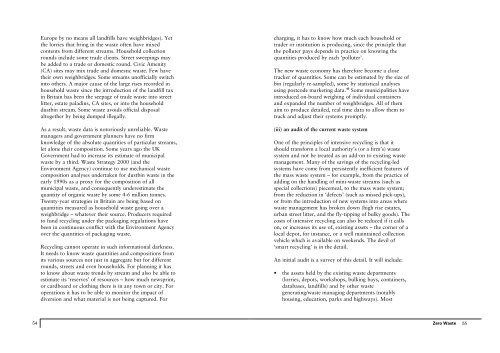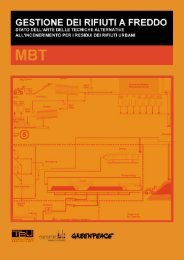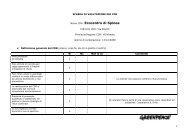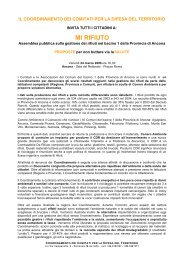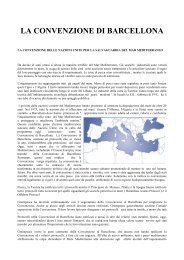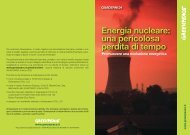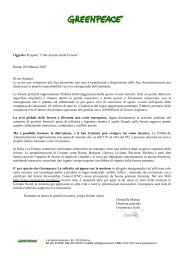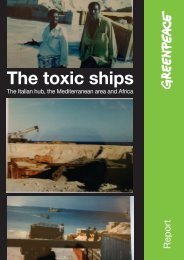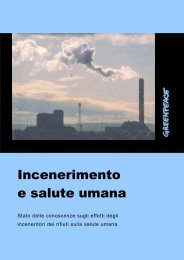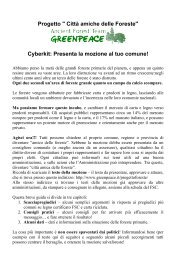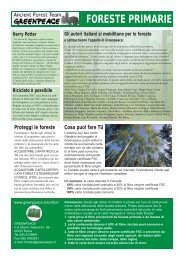Zero Waste by Robin Murray, Greenpeace Environmental Trust 2002
Zero Waste by Robin Murray, Greenpeace Environmental Trust 2002
Zero Waste by Robin Murray, Greenpeace Environmental Trust 2002
You also want an ePaper? Increase the reach of your titles
YUMPU automatically turns print PDFs into web optimized ePapers that Google loves.
Europe <strong>by</strong> no means all landfills have weighbridges). Yet<br />
the lorries that bring in the waste often have mixed<br />
contents from different streams. Household collection<br />
rounds include some trade clients. Street sweepings may<br />
be added to a trade or domestic round. Civic Amenity<br />
(CA) sites may mix trade and domestic waste. Few have<br />
their own weighbridges. Some streams unofficially switch<br />
into others. A major cause of the large rises recorded in<br />
household waste since the introduction of the landfill tax<br />
in Britain has been the seepage of trade waste into street<br />
litter, estate paladins, CA sites, or into the household<br />
dustbin stream. Some waste avoids official disposal<br />
altogether <strong>by</strong> being dumped illegally.<br />
As a result, waste data is notoriously unreliable. <strong>Waste</strong><br />
managers and government planners have no firm<br />
knowledge of the absolute quantities of particular streams,<br />
let alone their composition. Some years ago the UK<br />
Government had to increase its estimate of municipal<br />
waste <strong>by</strong> a third. <strong>Waste</strong> Strategy 2000 (and the<br />
Environment Agency) continue to use mechanical waste<br />
composition analyses undertaken for dustbin waste in the<br />
early 1990s as a proxy for the composition of all<br />
municipal waste, and consequently underestimate the<br />
quantity of organic waste <strong>by</strong> some 4-6 million tonnes.<br />
Twenty-year strategies in Britain are being based on<br />
quantities measured as household waste going over a<br />
weighbridge – whatever their source. Producers required<br />
to fund recycling under the packaging regulations have<br />
been in continuous conflict with the Environment Agency<br />
over the quantities of packaging waste.<br />
Recycling cannot operate in such informational darkness.<br />
It needs to know waste quantities and compositions from<br />
its various sources not just in aggregate but for different<br />
rounds, streets and even households. For planning it has<br />
to know about waste trends <strong>by</strong> stream and also be able to<br />
estimate its ‘reserves’ of resources – how much newsprint,<br />
or cardboard or clothing there is in any town or city. For<br />
operations it has to be able to monitor the impact of<br />
diversion and what material is not being captured. For<br />
charging, it has to know how much each household or<br />
trader or institution is producing, since the principle that<br />
the polluter pays depends in practice on knowing the<br />
quantities produced <strong>by</strong> each ‘polluter’.<br />
The new waste economy has therefore become a close<br />
tracker of quantities. Some can be estimated <strong>by</strong> the size of<br />
bin (regularly re-sampled), some <strong>by</strong> statistical analyses<br />
using postcode marketing data. 43 Some municipalities have<br />
introduced on-board weighing of individual containers<br />
and expanded the number of weighbridges. All of them<br />
aim to produce detailed, real time data to allow them to<br />
track and adjust their systems promptly.<br />
(iii) an audit of the current waste system<br />
One of the principles of intensive recycling is that it<br />
should transform a local authority’s (or a firm’s) waste<br />
system and not be treated as an add-on to existing waste<br />
management. Many of the savings of the recycling-led<br />
systems have come from persistently inefficient features of<br />
the mass waste system – for example, from the practice of<br />
adding on the handling of mini-waste streams (such as<br />
special collections) piecemeal, to the mass waste system;<br />
from the reduction in ‘defects’ (such as missed pick-ups),<br />
or from the introduction of new systems into areas where<br />
waste management has broken down (high rise estates,<br />
urban street litter, and the fly-tipping of bulky goods). The<br />
costs of intensive recycling can also be reduced if it calls<br />
on, or increases its use of, existing assets – the corner of a<br />
local depot, for instance, or a well maintained collection<br />
vehicle which is available on weekends. The devil of<br />
‘smart recycling’ is in the detail.<br />
An initial audit is a survey of this detail. It will include:<br />
• the assets held <strong>by</strong> the existing waste departments<br />
(lorries, depots, workshops, bulking bays, containers,<br />
databases, landfills) and <strong>by</strong> other waste<br />
generating/waste managing departments (notably<br />
housing, education, parks and highways). Most<br />
54<br />
<strong>Zero</strong> <strong>Waste</strong><br />
55


